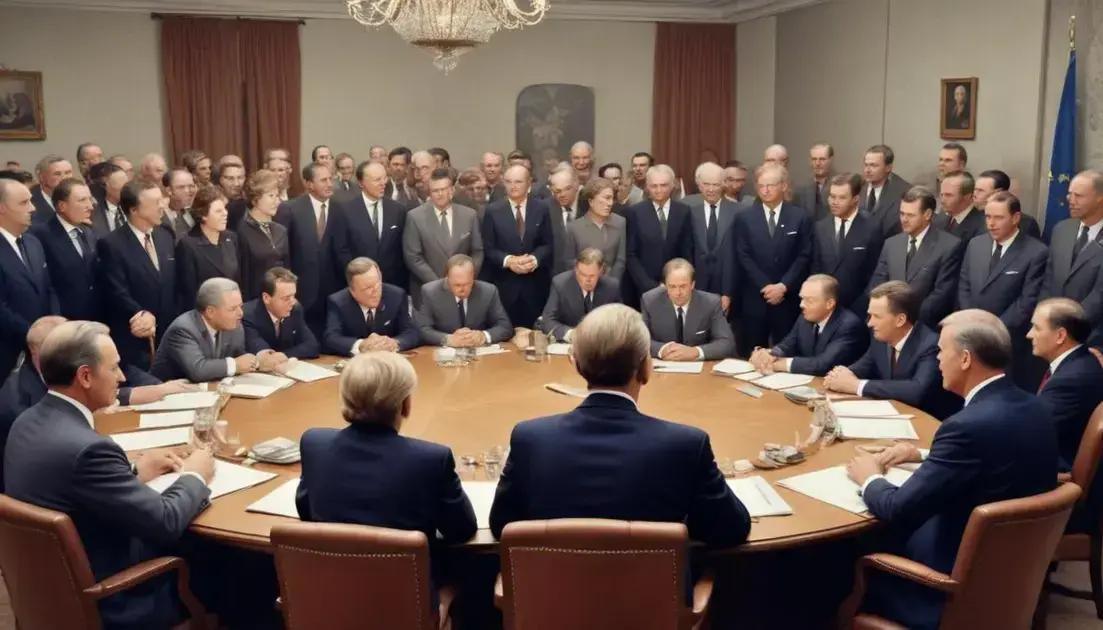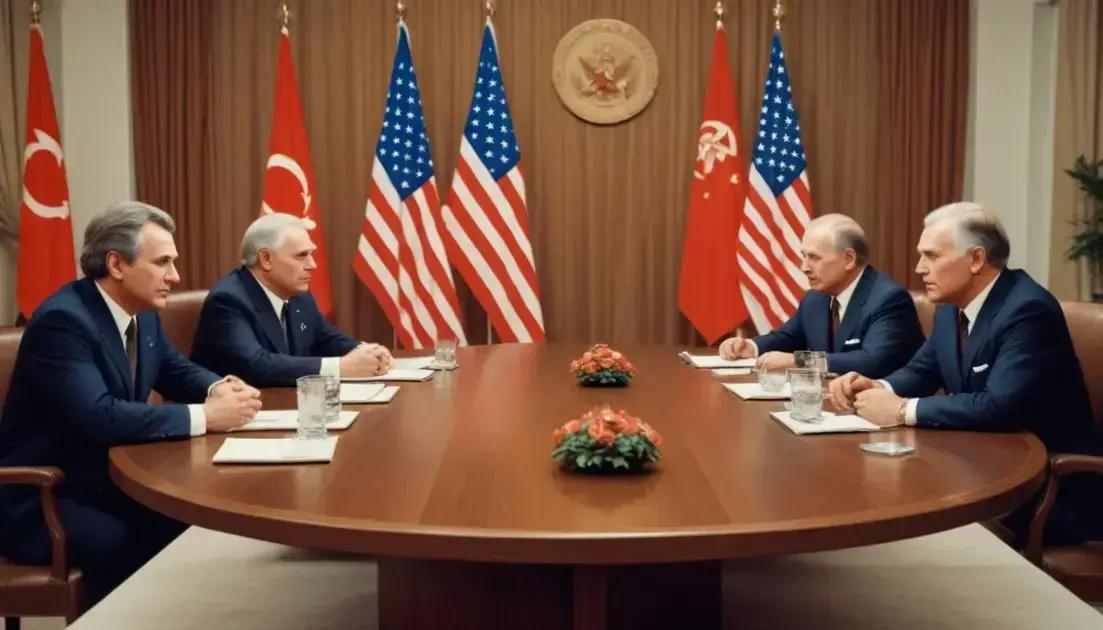
NATO: Western Military Alliance Against USSR
NATO, established in 1949, remains a key military alliance focused on collective defense and global security. Initially formed to counter the Soviet threat, NATO has evolved to address modern challenges such as terrorism and cyber-attacks. The alliance currently includes 30 member countries, fostering cooperation and joint military training. NATO’s significance today lies in its ability to adapt to new threats, manage crises, and maintain peace through partnerships with non-member nations, ensuring stability in a rapidly changing world.
NATO, the North Atlantic Treaty Organization, was established in 1949 to safeguard Europe and the U.S. against Soviet threats. Have you ever wondered how such alliances shape global stability?
Introduction to NATO’s formation
NATO, or the North Atlantic Treaty Organization, was formed in 1949. It came about because many countries were worried about the Soviet Union. The idea was simple: countries could work together to keep each other safe.
At first, there were 12 member countries. They included the United States, Canada, and several Western European nations. These countries agreed to help each other if one of them was attacked.
In the early years, NATO focused on military strength. Leaders wanted to send a strong message to the Soviet Union. They believed that united, they could deter any aggression.
Over time, NATO grew. More countries joined the alliance, which showed a solid commitment to Western values. This expansion helped spread democracy and stability in Europe.
NATO also worked to promote peace. They took part in missions around the world to help in times of crisis. This included efforts in places like the Balkans and Afghanistan.
Today, NATO still plays a vital role in global security. While the world changes, the basic idea of mutual defense remains the same. Working together helps member countries face new challenges effectively.
The Cold War context
The Cold War was a tense time in history. It lasted from about 1947 to 1991. During this period, the world split into two main sides. One side was led by the United States, and the other by the Soviet Union.
These two superpowers had very different beliefs. The U.S. wanted to promote democracy and capitalism. In contrast, the Soviet Union supported communism, where the government controls everything.
This rivalry created conflicts in many places. Countries around the world chose sides or tried to stay neutral. Tensions were high, and both superpowers wanted to show their strength.
Military alliances were key to this struggle. NATO formed as a response to Soviet threats. This alliance was like a club of countries that promised to protect each other.
Several events heightened fears during the Cold War. The Korean War and the Cuban Missile Crisis are just a few examples. These incidents could have led to a larger conflict, but they were resolved without direct war.
In this context, NATO played a vital role. The alliance worked to prevent Soviet expansion. It also aimed to reassure member countries that help was available if needed.
Key members and their roles
NATO has many key member countries, each with important roles. The largest and most influential is the United States. It contributes the most military power and maintains a strong presence in Europe.
Another significant member is Germany, which plays a crucial role in the alliance. Germany focuses on diplomacy and economic support, helping to maintain stability in Europe.
France is also vital. It has a strong military and offers key capabilities in defense planning. France often takes the lead in various missions.
United Kingdom remains an essential player. The UK has a robust military and often supports operations. Its experience in conflict zones adds to NATO’s collective strength.
Other members like Canada, Italy, and Spain also contribute valuable resources and personnel. Each country brings unique skills and capabilities to the group.
NATO relies on cooperation among all members. Their combined efforts create a powerful defense system. They work together to respond to threats and ensure safety in the region.
NATO’s evolution over the years
NATO has changed a lot since it was formed in 1949. Initially, it focused on countering the Soviet threat during the Cold War. This goal united member countries under a shared defense.
As the Cold War ended, NATO evolved. It started to include former Eastern Bloc countries. This expansion helped support democracy in those nations.
During the 1990s, NATO faced new challenges. The organization took part in peacekeeping missions in the Balkans. These efforts helped to stabilize a region troubled by conflict.
In the early 2000s, NATO continued to adapt. The alliance began operations in Afghanistan. This marked a shift from just collective defense to tackling global security issues.
Today, NATO also focuses on cybersecurity and terrorism. These threats affect many countries and require cooperation among members. The alliance works to ensure a broad defense strategy.
NATO’s evolving membership has expanded from 12 to 30 countries. Each new member brings different strengths to the table, enhancing NATO’s overall capabilities.
The significance of NATO today
NATO remains important in today’s world. Its main goal is to ensure the safety of its member countries. Collective defense is still a key principle. If one member is attacked, all respond together.
Modern threats are different than in the past. Today, NATO faces challenges like terrorism and cyber-attacks. These threats can affect many nations at once.
Furthermore, NATO is involved in crisis management. It helps countries in conflict by providing peacekeeping forces. These actions support global stability and protect civilians.
NATO also focuses on training and strengthening member forces. Joint exercises improve readiness. Countries learn to work together effectively, which boosts overall defense capabilities.
Another aspect is partnerships with non-member countries. NATO works with many nations to enhance security. These partnerships strengthen global cooperation and promote peace.
Lastly, NATO guards against hybrid threats. This includes misinformation and economic pressure. The alliance adapts strategies to counter these newer tactics.
Conclusion
In conclusion, NATO’s evolution shows its ability to adapt over time. Today, it plays a vital role in ensuring the security of its members and addressing modern threats. From tackling terrorism to managing crises, NATO works hard to keep peace and stability.
The alliance’s strong cooperation among countries is key. By training together and responding swiftly, NATO remains prepared for any challenge. Its partnerships with non-member nations also expand its reach and effectiveness.
As global threats change, NATO continues to be relevant. Its focus on collective defense, crisis management, and readiness helps create a safer world for everyone. Supporting peace and security is crucial in today’s interconnected environment, and NATO is at the forefront of those efforts.


